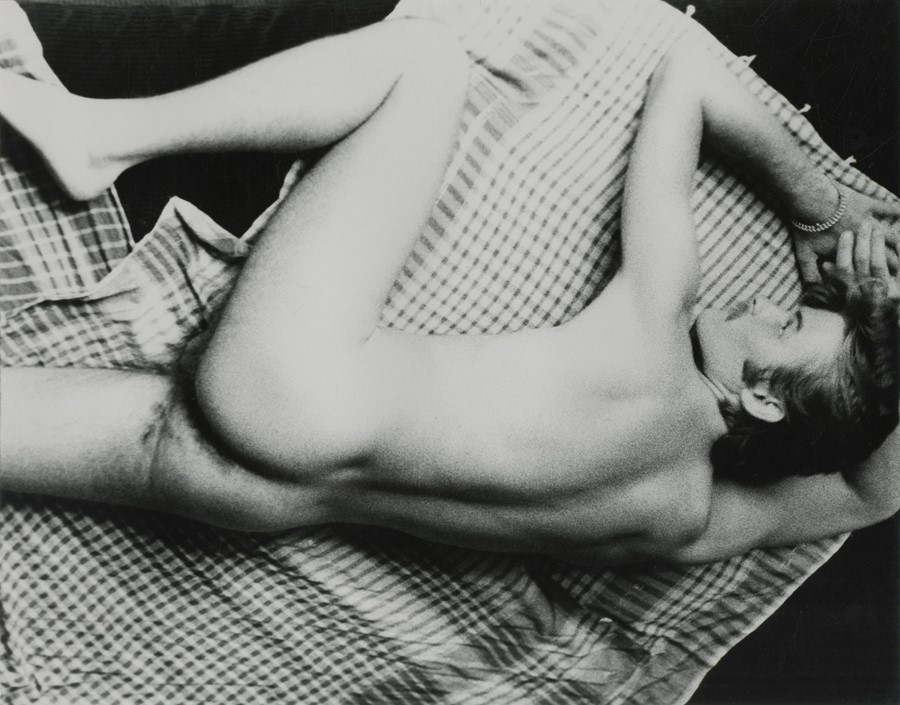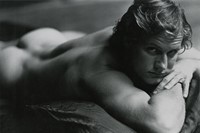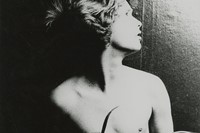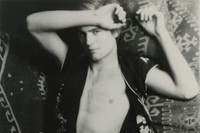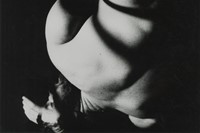As his gallery publishes a new zine devoted to the sensual nudes of Victor Arimondi, Ethan James Green discusses stumbling across the photographer’s little-known work at auction
In 1972, Victor Arimondi (1942-2001) was one of Europe’s top male models. He had walked in shows for Nino Cerruti and Valentino, and landed the cover of Esquire magazine. “He was just so physically striking,” says his partner Don Hershman. “6’1. He had a giant, Roman skull with thick hair. Like a Roman statue.” But that year, Arimondi decided to pursue his ambition to be a photographer. Accepted to one of Stockholm’s best art schools, he wrote in his unpublished memoir: “Love was going to be the subject of [my art], my desperate quest for love and dreams.”
Arimondi began his photography career living in Stockholm, shooting portraits of artists, actors and bohemians in Sweden and abroad. But it was Arimondi’s male nudes – soft, sensual, guttingly beautiful – that caught the eye of William Como, editor-in-chief of After Dark, a New York entertainment magazine catering to the city’s glamorous gay scene. Persuaded by Como to relocate to New York, Arimondi’s career took off and his work appeared in Vogue and Harper’s Bazaar, on the covers of gay titles like The Advocate and Honcho, and in books: The Look of Men (1980), Boyfriends (1984) and Taschen’s The Male Nude (1998).
Now, a collection of Arimondi’s unpublished nudes, sent as proofs to Como, are being published by New York Life Gallery as a zine. Discovered by the photographer Ethan James Green, the gallery’s founder, Rush: A Collection of Nudes by Victor Arimondi hopes to rescue the photographer from near total obscurity.
Below, in his own words, Green sits down with AnOther to discuss Arimondi’s work, and why he hopes he will now be given his due.
“I was looking for a desk at an auction. It was an auction house that I commonly get things from, so I started skimming through the other lots. And there were all these boxes of photo proofs from the estate of William Como, the editor-in-chief of After Dark magazine. After Dark is still relatively new to me. It was a gay entertainment art magazine, covering theatre, cinema, ballet, performance art, artists. So right away I assumed that these were all proofs that photographers had been sending to the magazine over the years, pictures that were published. So I bid and won a few different lots.
“At the time we were doing a zine launch at a gallery I started called New York Life Gallery. We wanted to publish three photographers and we were struggling to find a third. I saw Victor’s proofs in this auction and right away I knew the third zine would be about his work. I knew nothing about him. I acquired a few different boxes of Victor’s proofs, but the ones we’re publishing in the zine are all nudes that he mainly took in Sweden from 1968 to 1983.

“I started researching who he was and found out that he was a male model who became a photographer working in fashion, which is so funny, because that’s my story. Victor passed away in 2001 from HIV/Aids, but we got in touch with his living partner, Don Hershman, who manages his estate. Don came by my office and we had a coffee and he told us a bit more about Victor. Victor was an artist that had a lot of integrity, almost too much. It was hard for him to work commercially and have a career because he was so particular about his work.
“From talking with Don, it sounds like the subjects of the photographs are a mix of lovers but also construction workers; people that Victor seemed to be able to just stop on the street. Not even all the subjects are gay. You assume that, but Don told us that some of these subjects very likely were straight men who Victor just met. People seemed to be very comfortable around him to pose. When you look at these pictures, everyone seems at ease. Don says that he was very gorgeous, Italian. He must have been able to make people feel really good.
“Good nudes are hard to do, but Victor’s have a softness. They’re beautiful, they’re not just sexual. I think because he is so unknown, to see work that’s so strong that’s just sitting there, that could vanish, was crazy to me. There’s so much talent. But not everyone gets that chance to be celebrated in a way that cements them into a reference for us. The work at the gallery has been a lot of resurrection; finding artists that no one really knows about, or artists that people are forgetting, and trying to bring them back in.
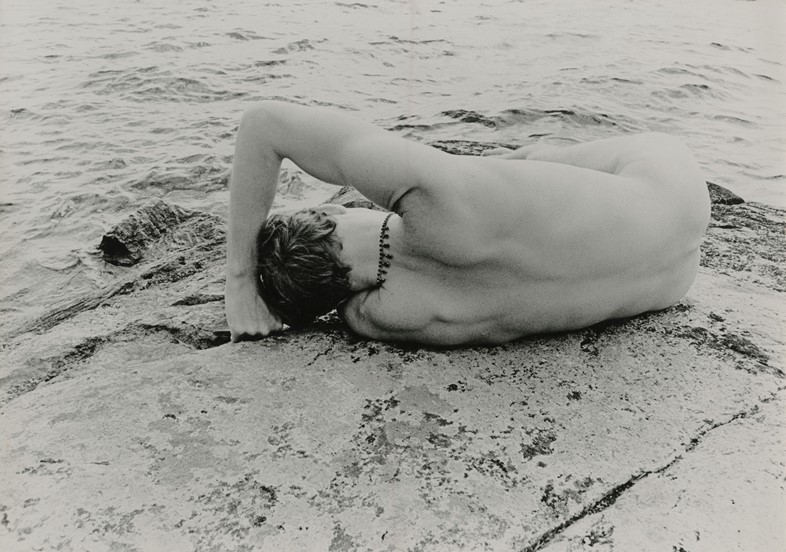
“When you look at these pictures, some of them being late 60s, even in the early 80s, being gay was so different from what it means now. If I started doing nudes today of muscular white men, it would be so pointless. I don’t know what that would do for the world or who that would inspire, but being a gay photographer documenting the male form and the ‘gay gaze’ back then was something totally different. It was just taboo. These photographs were a big reason why he didn’t work that much. I think that the male physique in these pictures held a lot of political weight.
“All the proofs that are in the zine are also for sale. And what’s cool is that they either have Victor’s handwriting on the back, or they’re stamped by his studio. They’re almost like objects. His hand touched them. I also look forward to people seeing more of Victor’s work. It has such range. He photographed drag queens, he photographed Black models, people who could have been non-binary or trans. Victor was someone who didn’t get what he deserved. So I just hope that people can really see the level of the pictures and be inspired by them.”
Rush: A Collection of Nudes by Victor Arimondi is published by New York Life Gallery and is out now.
